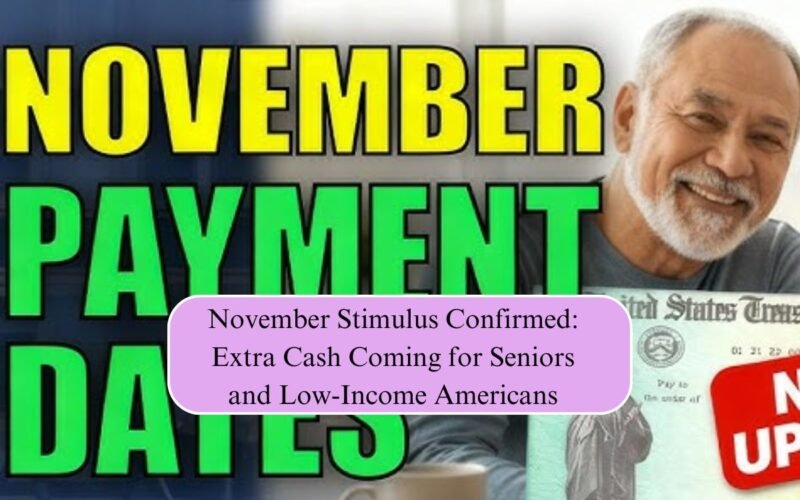A new round of financial relief is officially on its way. The federal government has confirmed that extra stimulus payments will be distributed to seniors and low-income Americans beginning in November. This new update offers critical support to those most affected by the rising cost of living, including retirees and individuals on fixed incomes.
What the November Stimulus Means
The November stimulus aims to provide additional economic relief as inflation and everyday expenses continue to pressure millions of households. For seniors who rely on Social Security, SSI, or SSDI benefits, this extra payment comes at a crucial time — just ahead of the holiday season. According to federal officials, the payment will help eligible recipients cover essential expenses such as groceries, medical costs, and utilities.
Who Qualifies for the November Stimulus
Eligibility for the November stimulus primarily includes:
- Seniors receiving Social Security or SSI benefits who meet income criteria.
- Low-income households earning less than the federal income threshold.
- Retirees without active employment who file federal tax returns or receive federal benefits.
- Disabled individuals covered under SSDI who were part of previous stimulus distributions.
Those who qualify will automatically receive the payment through direct deposit or a paper check, depending on the information already on file with the IRS or Social Security Administration. No new application is required for most recipients.
How Much Will Recipients Get?
While the exact amount varies based on eligibility, most qualifying seniors and low-income individuals will receive up to $1,400 in direct deposits or mailed checks. Some recipients may see partial payments if their income exceeds specific limits set by the IRS. For many, this deposit will be combined with regular Social Security or SSI benefits.
When Payments Will Arrive
Payments are scheduled to begin rolling out in mid-November, with direct deposits arriving first, followed by mailed checks. The rollout is expected to continue in waves throughout the month to ensure accuracy and prevent delays. Seniors using direct deposit can expect to see the funds appear under the description “IRS TREAS 310” in their bank statements.
Why the November Stimulus Matters
Many seniors have struggled to manage higher costs for food, rent, and medical care, even with annual Social Security cost-of-living adjustments (COLA). This new November stimulus offers additional financial breathing room for those living on fixed or limited incomes. For low-income Americans, it provides a critical safety net to maintain basic living standards through the end of the year.
How to Check Your Eligibility
If you receive Social Security, SSI, SSDI, or VA benefits, you are likely already included in the payment list. Individuals who filed a 2023 tax return but do not receive federal benefits can also qualify if they meet income and dependency guidelines. Those unsure of their eligibility can review their IRS or SSA account for updates or contact their local benefit office for clarification.
What to Do If You Don’t Receive a Payment
If you believe you qualify but do not see a payment by the end of November, first verify your banking information and mailing address. If your details are correct, you can contact the IRS or SSA after the full distribution period ends to report a missing payment.
FAQs
1. Who qualifies for the November stimulus payment?
Seniors receiving Social Security, SSI, SSDI, or VA benefits, as well as low-income taxpayers, are eligible for the new November stimulus.
2. How much money will seniors receive?
Most recipients will get up to $1,400, though some may receive less depending on income levels.
3. Do I need to apply to get the payment?
No application is needed. Eligible individuals will receive the payment automatically through direct deposit or check.
4. When will the payments start arriving?
Payments will begin mid-November and continue through the end of the month in batches.
5. Will this affect Social Security or other benefits?
No. The stimulus payment is a separate federal relief payment and does not reduce your regular benefits.

